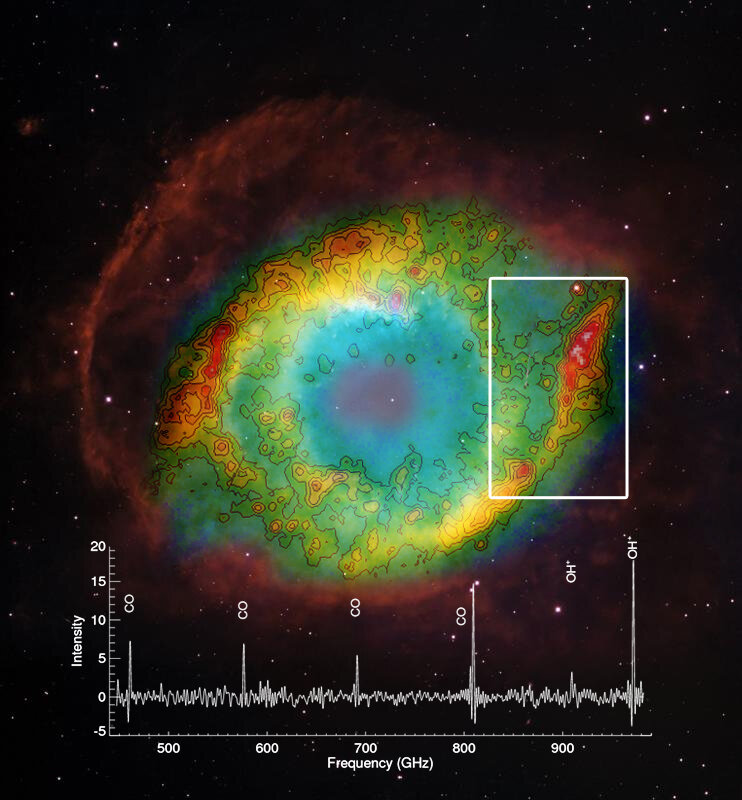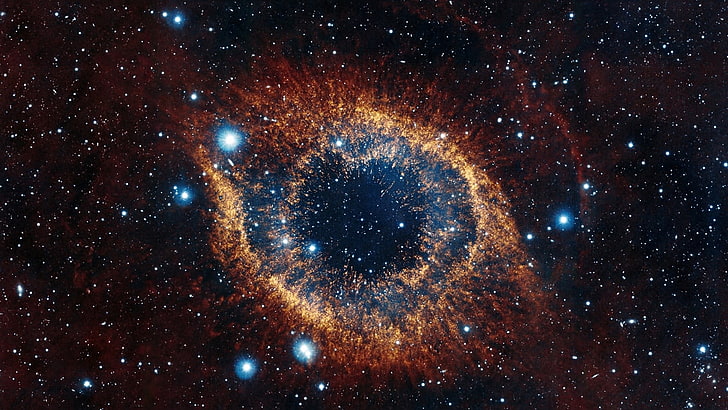The Helix Nebula is a large planetary nebula located approximately 695 light years from Earth in Aquarius constellation. It is the nearest bright nebula to our solar system. The nebula’s striking appearance earned it the nickname the Eye of God.
The Helix Nebula is a popular object for amateur astronomers and can be observed with binoculars, which reveal it as a hazy, greenish cloud.
The nebula appears as almost one-half the Moon’s diameter. The ring shape can only be resolved with large amateur telescopes, and the nebula’s radial streaks cannot be seen except through the largest ground-based telescopes.
The Helix Nebula was created at the end of the life of a star similar to the Sun, when the star evolved into a red giant and shed its outer layers. The star’s outer gasses, expelled into space, are lit by the remnant central core of the star, which will become a white dwarf when it cools down.
https://www.constellation-guide.com/helix-nebula-ngc-7293-caldwell-63-in-aquarius/

https://www.nasa.gov/mission_pages/chandra/images/helix-nebula.html

https://www.esa.int/Science_Exploration/Space_Science/Herschel/New_molecules_around_old_stars
Papers and publications
https://www.sea-astronomia.es/sites/default/files/vl_aller_a_1.pdf The role of TESS in the search for binary central stars of planetary nebulae…
https://academic-oup-com.ezproxy.lib.swin.edu.au/mnras/article/498/1/532/5892571 The collapse and expansion regimes of photoevaporated clumps.
https://ui.adsabs.harvard.edu/abs/2019AAS…23341102K/abstract Planetary nebulae (PNe) represent the near endpoints of evolution for stars of initial mass ~1-8 M☉, wherein the envelope of an asymptotic giant branch (AGB) star is photodissociated and ionized by high-energy radiation from a newly emerging white dwarf that was the progenitor star’s core.

